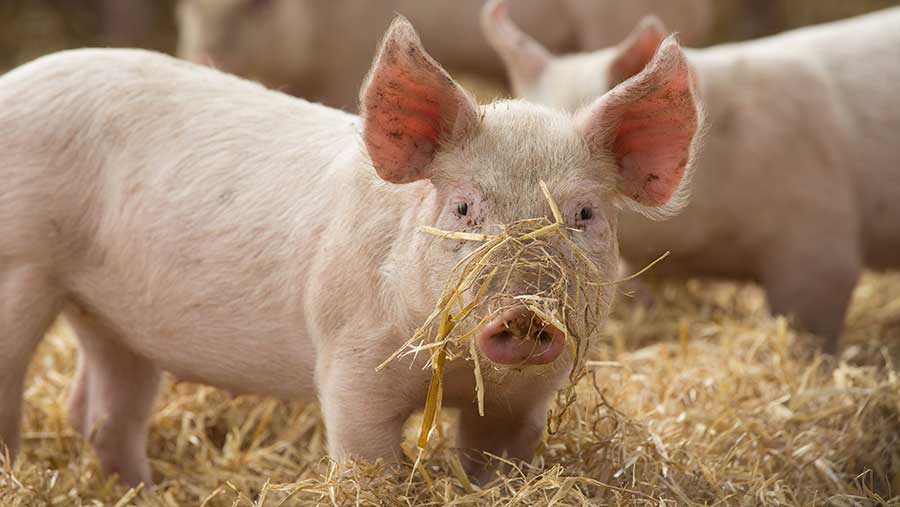Pig industry rallies to counter zinc oxide pollution fears
 © Tim Scrivener
© Tim Scrivener Concerted efforts by the UK pig industry to quell a European Union proposal to ban zinc oxide from pig feed on environmental grounds have been buoyed by the results of a producer survey.
The National Pig Association (NPA) survey found the environmental implications of the heavy metal were of low concern because the slurry from creep-fed weaners were being mixed with that of pigs of different ages on most farms.
An evidence-gathering initiative has been in force since mid-December across the UK pig sector to keep therapeutic zinc oxide in post-weaning diets.
See also: Possible zinc oxide ban a massive blow to pig industry
NPA producer survey
- 100 respondents
- Survey covered 68,000 sows and 399,00 finisher places
- No nursery farms completed the survey
- 79% of farms mixed slurry from different aged pigs
The UK pig industry’s stance is that zinc oxide has been hugely effective in minimising growth check, disease risk and death during the weaning period and that slurries containing zinc will only be from pigs within a very narrow age range.
This follows claims from the European Medicines Authority (EMA) that zinc levels could be of environmental concern – similar to nitrates – due to the spread of pig manure on land.
Earlier this month the NPA slurry survey detailed the slurry management of 100 farms. It found the majority of units mixed slurries from pigs of different ages before spreading or transfer to another farm.
No nursery units – those keeping pigs from weaning until 10-12 weeks of age – completed the survey. These are the farms suspected to have the highest concentrations of zinc in slurry.
NPA slurry survey
NPA policy adviser Georgian Crayford told Farmers Weekly there appeared to be good opportunity for slurry dilution on UK pig farms.
“Even where slurry is stored in pits underneath the buildings, some respondents indicated that all the slurry channels connect,” said Dr Crayford.
“In addition, weaned pigs are usually housed in the same accommodation for at least 30 days before moving to the next stage accommodation, meaning some dilution would occur even where respondents have indicated that slurry from different ages of pigs is not mixed.”
‘Worst-case scenario’
AHDB Pork senior vet manager Martin Smith said: “The EMA have to use a worst-case scenario model. In this case it is using figures from undiluted piglet faeces and is making the assumption that the majority of producers in the UK don’t mix this slurry with that from older animals.
“Obviously this is an unrealistic model to base these claims on.
“Figures from our initial research, in collaboration with Adas, show the environmental implications for feeding zinc to piglets in the UK are a lot lower than the figures the EU is banding around.”
Different risks
He said the risk may vary, differing by location, water tables, slurry volume and land availability and could be very different in countries such as the Netherlands and Denmark.
“The Dutch have limited land to spread manure, therefore they are spreading higher volumes at higher concentrations than the UK,” Mr Smith said.
“Much of Denmark is also reclaimed land and therefore there are issues with the water table that mean contaminants are much more likely to make it into watercourses. Because of this their regulations surrounding waste management are much stricter than ours.”
Mr Smith raised concerns about the issue of grey water – water that contain residues from products such as shampoo and soaps. He said it was a much more direct risk to the environment than two weeks’ worth of pig slurry containing low levels of zinc oxide.

